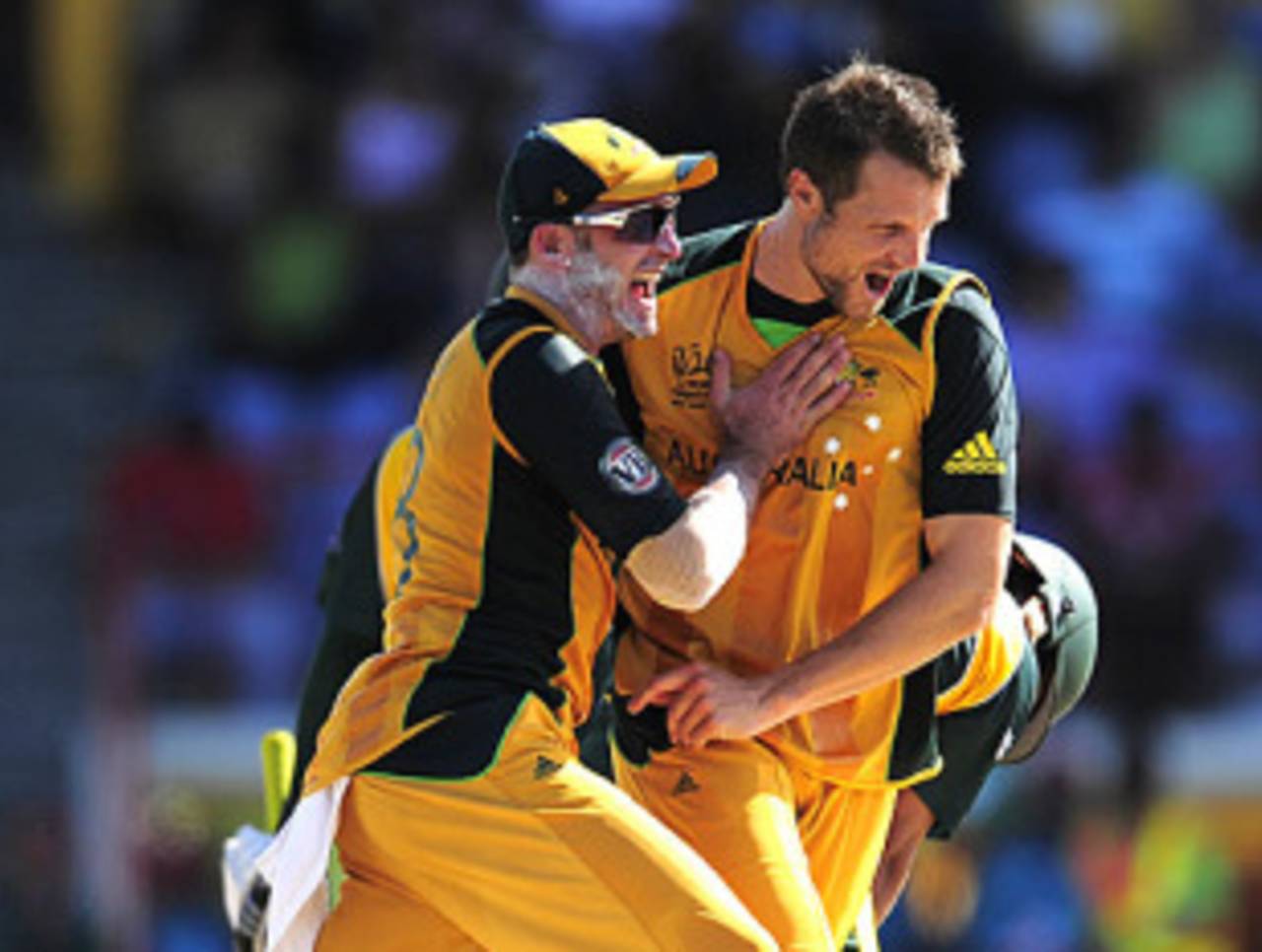A bold and welcome move
By drafting in Michael Hussey, and keeping Dirk Nannes on standby, Australia's selectors have taken a gamble that's out of character but welcome and worth taking
Brydon Coverdale
06-Mar-2011

Michael Hussey and Dirk Nannes: Selections that have given Australia their best chance of progressing to the final • AFP
It's not often Australia's selectors are congratulated, but they deserve it this time. Andrew Hilditch's panel has got it just right by sending Michael Hussey to the World Cup and flying Dirk Nannes across as a standby player. In one move they have both strengthened Australia's batting, especially against spin, and ensured the bowling won't be compromised.
The loss of Doug Bollinger to an ankle injury provided an opportunity. The selectors needed to choose as his replacement the player who would add the most to Australia's hopes of winning a fourth consecutive World Cup. Clearly, that man was Michael Hussey, the fourth-ranked ODI batsman in the world and one of Australia's most accomplished players of spin.
They could have gone for the conservative option and chosen a bowler, keeping the balance of the squad, but would Peter Siddle, or James Pattinson, or James Hopes have worried opponents in the same way that Hussey does? And would another bowler have even played a game, or simply sat in the rooms listening to his iPod for the next month?
Australia's plan is to go hard with a pace attack of Brett Lee, Mitchell Johnson and Shaun Tait, and they should stick to it. Jason Krejza and the part-timers are there to bowl spin and John Hastings is in the squad, ready to step in if required. They can also get 10 overs out of Shane Watson, reducing the need for another genuine fast man.
By sending Nannes as a standby player, they have cover in case of an injury, although whoever he replaces would not be able to return to the squad. They know that, as Stuart Broad found, there is the risk of waking up on match day to find a couple of bowlers in bed with stomach complaints. If that happens, they won't have time to have Nannes approved by the ICC's technical committee, but why make selections based on hypotheticals? The gamble they have made is worth taking.
Of course, the ICC confused matters by stating earlier in the tournament that "once replaced, a player cannot return to the squad". Australia's full-time selector Greg Chappell, as well as Hussey himself, believed that once Hussey had been named in the 15-man squad and then withdrawn due to his serious hamstring injury, he could not come back regardless of other injuries.
But a week ago, the ICC clarified that their wording was misleading. Now, the official ICC line is "once replaced, a player may not return to the squad save as an approved subsequent replacement for another player". Welcome back, Michael Hussey.
Hussey has proven himself as a finisher - remember the World Twenty20 semi-final? - and as a man who can rescue the innings if the top order fails. He showed against Graeme Swann during the Ashes that when he uses his feet and takes a positive approach against spinners, he can negate their impact, and that's a key factor with a few of his colleagues struggling against quality slow men on the subcontinent, as they did in the warm-ups.
Hussey averages 77 in ODIs in India, and in his ten innings he has never made a single-figure score. When he has visited over the past two years, he has made 73, 53, 81 not out, 40, 31 not out, 35 not out and 69. It would have been a travesty had he remained at home in Perth playing another meaningless Sheffield Shield match while there was a World Cup to be won.
As strange as it seems, given he is now Australia's Twenty20 captain, Cameron White could be the man in most danger of losing his place to accommodate Hussey. The other candidates are David Hussey and Steven Smith, but they both offer important bowling options that Ricky Ponting would be loath to give up, whereas White is in scratchy batting form and hasn't bowled his legspin in an ODI for 18 months.
The selectors also deserve credit for not only sending a standby bowler, but for choosing Nannes. His speed and unusual angle make him a tricky customer in limited-overs cricket, but for some reason he has been viewed as a Twenty20 specialist by Hilditch's panel up until now. But if Johnson, Tait or Lee go down, Nannes is the best like-for-like swap to keep the aggressive approach going.
He might not be needed but if he is, he won't make things easy for the opposition. And by the time the quarter-finals come around, Australia know that it's all or nothing. These selections give them their best chance of progressing to the final.
Brydon Coverdale is an assistant editor at ESPNcricinfo